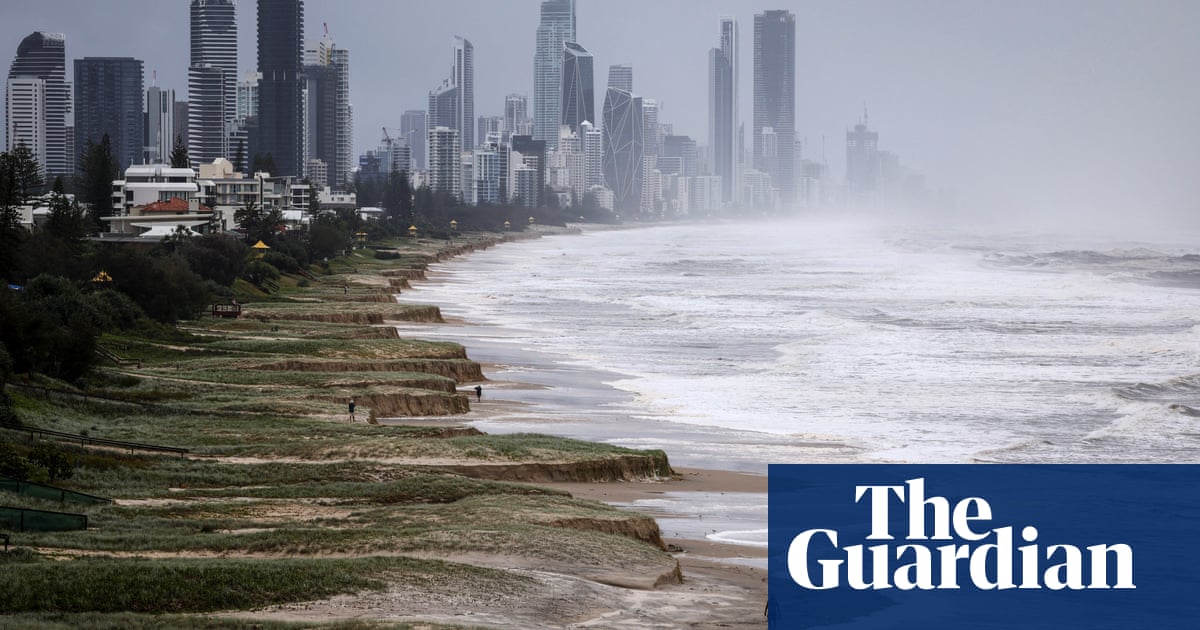In a dusty corner of the Atacama Desert, the driest non-polar region on Earth, mounds of used clothes are scattered across the sand, where they sit, bleached and tattered, under the sun.
As the sea mist drifts over a high coastal plateau above the city of Iquique in Chile’s far north, the breeze rustles plastic bags bursting with second-hand clothing.
Piles of garments stretch into the distance: consignments of nursing uniforms, shipments of shoes, bundles of work overalls and last season’s fast fashion discards, high street tags still attached.
But Chile’s government has taken a decisive step towards addressing the environmental crisis which has beset the Atacama Desert.
This week, the country’s environment ministry announced that it had added textiles as a “priority” category to its extended producer responsibility law, paving the way for importers to be made responsible for the waste produced by the thousands of tonnes of used clothing brought into Chile each year.
Importers are now obliged to report the clothing they bring into the country, and further regulations will be added to the bill shortly.
Chile’s government will also publish a public policy specifically targeting textiles and their place in the circular economy. One of its goals will be to eradicate textile dumps in the Atacama Desert.
According to government data, more than 90% of textiles sold in Chile are imported, making the South American country the world’s fourth-largest importer of second hand clothing.

The government calculates that Chile imports 123,000 tonnes of used clothing every year, with the effects felt most acutely in the north of the country – where the situation in the Atacama Desert has won global attention.
“This would spur a new consumer culture, as companies would be required to offer repair, reuse, and recycling services,” said Beatriz O’Brien, the national coordinator for NGO Fashion Revolution.
“It is a step toward a transition from a linear economy of production, consumption, and disposal to a circular economy for textiles and clothing in the country.”
Global textile production is projected to grow from the 109m tonnes manufactured in 2020 to 145m tonnes in 2030.
In Chile, people use an average of 32kg of textiles, contributing to 572,000 tonnes of textile waste per year in the country.
Every day, tonnes of clothing arrive duty-free at the freeport in Iquique as giant plastic-wrapped bales, where they are sliced open and sorted into categories by a migrant workforce.
The best clothes, often in near-pristine condition, are sold in outlet stores built into the narrow rows of warehouses at the freeport, or sent to Chile’s capital, Santiago, for resale. Some are even bailed up and sent back to the US to be resold.
The rest winds its way in a convoy of small trucks up to Alto Hospicio, a poor city sprawling across the plateau above Iquique, where the clothes are incorporated into a seemingly endless cycle of resale and reuse.
At La Quebradilla, one of the country’s largest open-air markets, vendors sell clothes for small amounts of cash, while the least desirable items are often slung out in the Atacama Desert.
Some are then burned, with thick plumes of black smoke spiralling skyward from a messy dump on a high plateau outside Alto Hospicio.
But after several years of research, Chile’s government has managed to add textiles to its extended responsibility law.
Many countries have similar legislation, but Chile’s, in force since 2017, had only made producers responsible for recycling goods in several categories, including, tires, batteries, oils and plastic packaging.
“The inclusion of textiles in the [producer responsibility law] will establish the obligations of producers, who will no longer be able to disregard the environmental impacts of unused textiles,” said Chile’s environment minister Maisa Rojas.
“The successful application of the law will allow us to address the lack of regulation for the industry, which has generated huge quantities of waste and affects the quality of life for people and the environment.”
Contact us about this story
Show
The best public interest journalism relies on first-hand accounts from people in the know.
If you have something to share on this subject you can contact us confidentially using the following methods.
Secure Messaging in the Guardian app
The Guardian app has a tool to send tips about stories. Messages are end to end encrypted and concealed within the routine activity that every Guardian mobile app performs. This prevents an observer from knowing that you are communicating with us at all, let alone what is being said.
If you don't already have the Guardian app, download it (iOS/Android) and go to the menu. Select 'Secure Messaging'.
SecureDrop, instant messengers, email, telephone and post
See our guide at theguardian.com/tips for alternative methods and the pros and cons of each.
Illustration: Guardian Design / Rich Cousins

.png) 5 hours ago
1
5 hours ago
1

















































